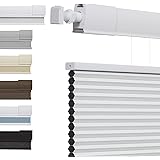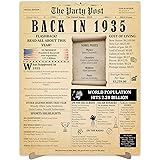Navigating the ever-shifting landscape of home decor trends can be a challenge. While popular styles often grab attention, many are fleeting. It is wise to avoid trends that quickly lead to buyer’s remorse. The video above highlights some popular aesthetic movements. This post will delve deeper into specific design pitfalls. It also explores alternatives for creating a timeless home. Smart choices are key to lasting beauty.
The Nancy Meyers Aesthetic: Beyond Lived-In Kitchens
The “Nancy Meyers aesthetic” has gained significant traction. This style is often associated with New England cottages. It brings charming, traditional furniture into focus. Blues and florals are common elements. The look aims for an enchanting, fairy tale ambiance. However, a particular aspect often becomes problematic. This is the kitchen design, which can appear excessively “lived-in.”
1. The Pitfall of Intentional Disarray
A home should feel lived-in, certainly. It is where life unfolds. Yet, this trend often takes the concept too far. Kitchens can be seen with items in disarray. Appliances might cover every counter surface. Stacks of mail often appear in prominent spots. This can create a sense of chaos. It is a distinction between authentic daily life and deliberate messiness. Real life brings messes; there is no need to engineer them.
Such a style might suggest a lack of organization. It could imply a disregard for tidiness. While it removes pressure for perfection, this often backfires. A truly functional kitchen needs order. Items should have designated places. Countertops need clear space for cooking. Imagine the difficulty of finding specific utensils. Or the frustration of navigating clutter daily. An environment like this can hinder creativity. It is challenging to think clearly in such spaces.
2. Embracing Functional Elegance
Alternatives exist for a truly lived-in feel. Consider displaying beautiful cookbooks. Glass-front cabinets can showcase organized dishware. The goal is functionality with charm. Seek a balance between freedom and intentional design. Your kitchen can be both active and tidy. Items are put away after use. Surfaces remain clear for the next meal. A home gets messy naturally. There is no need to make it messy on purpose.
3. The Role of Healthy Cookware
Beyond aesthetics, kitchen functionality is crucial. Healthy cooking practices are becoming a priority. Many non-stick pans contain harmful chemicals. PTFE or Teflon are commonly used. These are “forever chemicals.” They can remain in the body for decades. Evidence suggests significant health risks.
- **95% of home goods** often contain toxic materials like PTFE or Teflon.
- **97% of Americans** have PFAAS toxic chemicals in their blood. This comes from non-stick cookware.
- **Over 70% of frying pans** sold in America contain Teflon and similar chemicals.
Choosing ceramic cookware offers a healthier alternative. These materials are non-toxic. They allow for cooking with less oil or butter. This promotes a cleaner lifestyle. Organized storage for pots and pans also adds to kitchen serenity. It reduces visual clutter. This creates an environment conducive to well-being.
Plaster Walls: A Textured Trend with Tremendous Regret
Textured walls have made a comeback. Plaster walls, in particular, are popular. They offer a unique tactile appeal. This trend is visible in many design catalogs. Retailers like West Elm and Crate and Barrel feature them. The textured look appears quite stylish in photographs. However, this is a trend with significant downsides.
1. The High Cost of a Fleeting Fad
Plaster walls gained popularity in the 1990s. Many homeowners found themselves ripping them out later. The process of application is labor-intensive. It requires skilled hands. Removing plaster is even more arduous. It involves substantial time and expense. This often leads to deep regret. It can feel like a “drunk tattoo” for your home. The initial idea seems great, but the permanence is daunting. It is a commitment that many come to dread.
2. Long-Term Maintenance and Removal Nightmares
The texture can trap dust. It makes cleaning more difficult. Future renovations become complicated. Painting over plaster can be tricky. Smooth finishes are often desired later on. Achieving this requires extensive work. Many clients still pay to remove old plaster. They are fed up with its existence. This speaks volumes about its long-term appeal. Think about the enduring nature of your design choices. Consider maintenance needs. Assess future renovation possibilities.
3. Exploring Thoughtful Alternatives
Plain, smooth walls are always a classic. They offer versatility. They also serve as a clean backdrop. If texture is desired, there are other options. Limewash paint provides a subtle, soft texture. It creates a warm, inviting feel. Limewash is much easier to apply. It is also simpler to change later. It offers a sophisticated, matte finish. This can mimic ancient architectural styles. It avoids the permanence of plaster. Darker, rich paint colors can also add warmth. These choices provide depth without the commitment of heavy textures.
Year-Round Fall Colors: The “Fall-Core” Dilemma
Seasonal decor is enjoyable. Embracing fall colors like deep yellows and oranges is charming. Sage greens also evoke comfort. But using these “fall-core” palettes year-round is a risky move. It can create an atmosphere that feels heavy. It might also dampen the mood. These colors are often seen in spring catalogs. This creates a disconnect with the season.
1. Mood-Dampening Hues and Thematic Overload
Fall colors are designed for specific times. They reflect cooler temperatures. They evoke cozy feelings. Applying them universally can feel suffocating. An Atlanta summer, for example, feels wrong with such a palette. The home can take on a “theme-y” quality. This makes seasonal decorating difficult. Imagine putting up festive Fourth of July bunting. It could clash severely with an orange sofa. Such investments are substantial. They limit future flexibility. The entire space can feel dated very quickly. It might remind some of 1970s interior design.
2. The Power of Versatile Neutrals
A better approach is a neutral base. Beiges, taupes, and off-whites provide this foundation. They offer a calm and inviting canvas. Seasonal accents can then be easily introduced. This allows for dynamic changes throughout the year. Your home reflects the current season. It avoids a singular, unchanging theme. These neutrals also ensure longevity. They create a timeless backdrop. Furniture in these tones offers flexibility. It is easier to update with accessories.
3. Thoughtful Color Integration
If deeper colors are desired, consider restraint. Use them as accents. Perhaps an antique cabinet in a rich wood tone. Or throw pillows in a moody jewel tone. These elements add character. They do not overwhelm the space. Darker, heavier furniture can also be incorporated. Moorish-influenced pieces, for example, add sophistication. But using them sparingly is key. Balance is essential for a cohesive look. It ensures your space remains fresh and inviting. Avoid committing fully to home decor trends to avoid future regret.











